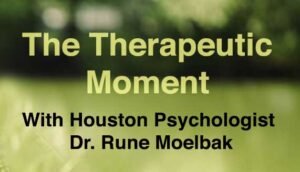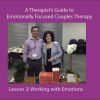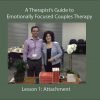If you ask couples what brings them to couples therapy, they will usually bring up one or the other issue that is problematic to them: My husband does not want to have sex with me anymore, my wife looks at other men, my partner and I disagree about how we should raise our children. However, if we dig a little deeper, we will see that many of these disagreements are rooted in one of three fundamental interaction styles.
Couples researcher Sue Johnson have called these the “demon dialogues”. She believes we get caught up in these interaction patterns and can’t find our way out of them.
Being in a relationship is really to be involved in a very fine-tuned dance, where one partner reacts or responds to the moves of the other partner in an ongoing cycle that defines their dance. No matter what the content is that couples fight about, it is thus often the dance itself that is the issue. Helping couples identify their patterns of interaction shifts focus from blaming one of the partners and empowers couples to understand their relationship in a new way.
So what are the patterns couples therapists most often see?
Let's go through them one at a time:
Pattern 1: Find the Bad Guy
The first dance couples get caught in is one of mutual attack and hostility. You criticize me. I feel hurt and criticize you back. Each time we undercut each other, we leave bruises on our relationship. Over time our guards remain up as we are constantly waiting for the next time our partner will attack. Sue Johnson refers to this dance as Find the Bad Guy because it is really about disowning one’s own responsibility and blaming one’s partner for the poor state of the relationship. Many couples who first come to therapy think that the problem is squarely in their partner. If only she would be more attentive, or he would be less needy, everything would be great, they say. And yet trying to find the moral fault or character flaw in your partner is ultimately ineffective because the only way you can win this argument is at the expense of valuing and respecting your partner.
Pattern 2: The Protest Polka
In the second dance couples do, the mutual fighting has ceased and a different power balance has taken its place. Now one partner is constantly finding fault, while the other is retreating from the relationship. In many cases we know this pattern as the nagging wife and aloof husband syndrome, although the roles can certainly be reversed. Sue Johnson refers to this dance as the Protest Polka because it develops because one partner feels alone in the relationship and is protesting the perceived abandonment. Because the protesting partner is not aware of the reason for the dance, they often focus on picking fights about small issues that belie that underlying sense of feeling lonely and longing for more affection and attention. The partner in turn, thinking that they are inadequate or always messing something up, begin to numb themselves and check out of the relationship as a protective measure. This of course only makes the protester feel more alone and triggers another barrage of complaints.
Pattern 3: Freeze and Flee
The deadliest pattern couples present with is the freeze and flee pattern. Here partners simply live parallel existences. They are roommates, not lovers. They have stopped expecting affection and attention and have both withdrawn emotionally from the relationship. This pattern often develops once the protester realizes that their basic call for companionship is not going to be met. At this point the protester starts to grieve the loss of their dream partner and accept a deadly status quo of silent dissatisfaction. If possible, couples should seek therapy before the dance changes into this pattern of mutual distancing. It can be hard to revive love between partners once this pattern of Freeze and Flee is set in motion. Far too many couples never seek couples therapy before it is too late and end up living lives where only material comfort or shared parenting keeps them together.
How to Change the Dance:
One of the first tasks of couples therapy is often to get couples to shift their mindset from a zero-sum game of you are right or I am right. Instead they need to be able to identify the ways in which they participate in the couples dance. This will involve becoming aware of the patterns of their interactions and the emotional signals that fuel each partners step. Emotion Focused Couples Therapy or EFT helps couples understand their dance and change the music. You can find an EFT therapist in your area by clicking on the link to International Centre for Excellence in Emotionally Focused Therapy (ICEEFT)
If you want to start by reading more about the topic, I recommend you read Sue Johnson’s Book: Hold Me Tight. This book has practical exercises to help you break free from negative patterns that are pulling you and your partner apart.
About Me: I am a psychologist and couples therapist in Houston, Texas. I have received training in Emotion Focused Couples Therapy (EFT) and the Gottman Method, two of the most effective couples therapy approaches.


























